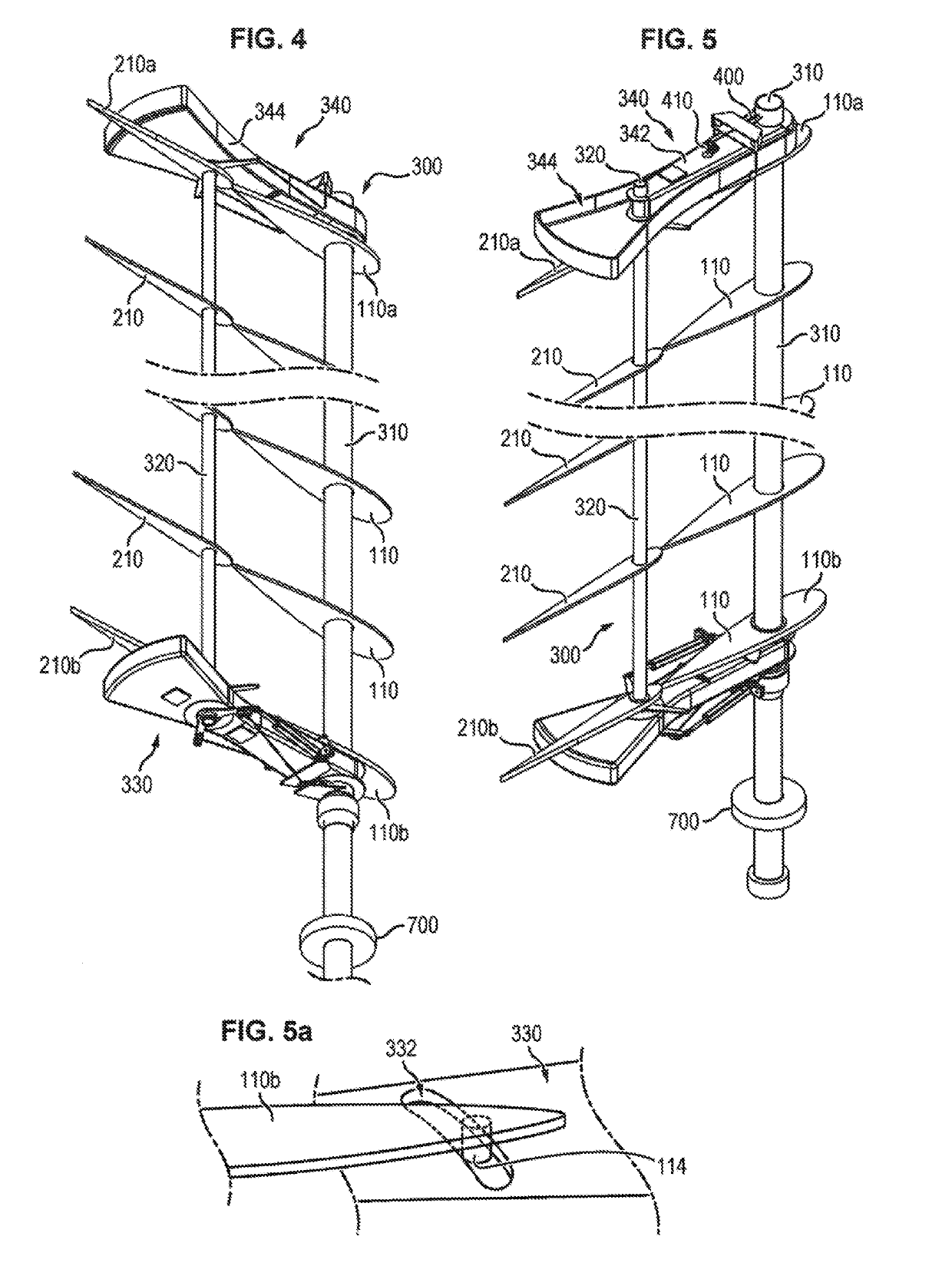Ship with sail propulsion
- Summary
- Abstract
- Description
- Claims
- Application Information
AI Technical Summary
Benefits of technology
Problems solved by technology
Method used
Image
Examples
first embodiment
[0058]First, with reference to FIGS. 1 to 11, the invention is going to be described.
a) General Principles
[0059]With reference to FIGS. 1, 2 and 3A to 3D, an airfoil according to this embodiment comprises two aerodynamic profiles both adjustable in incidence and for which the relative camber angle is adjustable. In the following, they are called first flap or fore flap, and second flap or aft flap. They are designated by the references 100 and 200 respectively. They pivot on the axes defined by two masts 310, 320 as is going to be seen in the following.
[0060]At least one of these profiles has an asymmetric aerodynamic transverse section in the fore-to-aft direction (with leading edge and trailing edge). It can for example involve sections called symmetric aircraft airfoil, and more preferably NACA 00xx standardized sections or others.
[0061]The relative angle of the second flap relative to the first flap is differentially adjustable along the height thus allowing a washout of the sec...
second embodiment
[0106]In a second embodiment, the command can be made at a distance from the mast by using a transmission such as a pulley 700 (possibly notched) secured to the mast 310 in the lower region thereof (see FIGS. 4 and 5) and connected to a control mechanism (manual, electrical, hydraulic, etc.) via a belt, a gearing, etc. In a particular embodiment, as shown in FIG. 24, the device for rotating mast 310 comprised a gearmotor 710 engaging a toothed wheel 720 coaxial with the mast.
[0107]Finally, in particular for light sector board type craft or small pleasure boats, a sheet and tackle can be simply provided analogously to the control of a traditional mainsail. The lashing is then done in the area of the aft region of the boom member 330.
[0108]In every case, to be sure that the rigid frame made up of the two masts 310, 320, the boom member 330 and the fixed member 342 of the gaff 340 turns as a whole during this angular adjustment, the members 330, 342 are mounted on the fore mast 310 so ...
PUM
 Login to View More
Login to View More Abstract
Description
Claims
Application Information
 Login to View More
Login to View More - R&D
- Intellectual Property
- Life Sciences
- Materials
- Tech Scout
- Unparalleled Data Quality
- Higher Quality Content
- 60% Fewer Hallucinations
Browse by: Latest US Patents, China's latest patents, Technical Efficacy Thesaurus, Application Domain, Technology Topic, Popular Technical Reports.
© 2025 PatSnap. All rights reserved.Legal|Privacy policy|Modern Slavery Act Transparency Statement|Sitemap|About US| Contact US: help@patsnap.com



